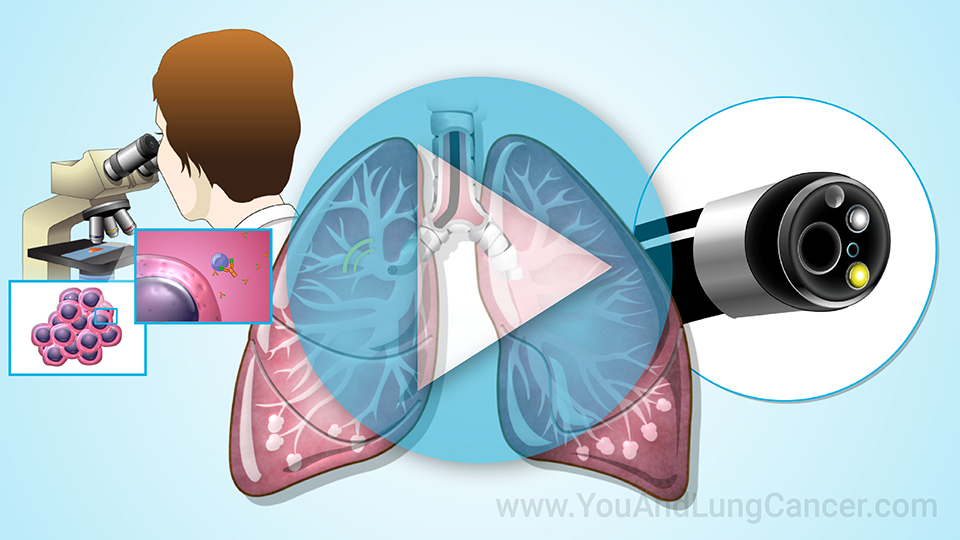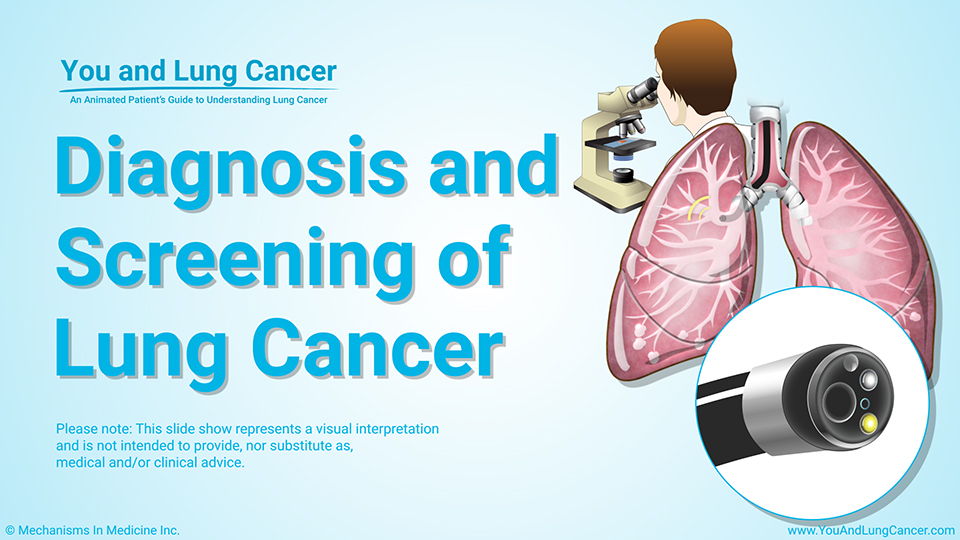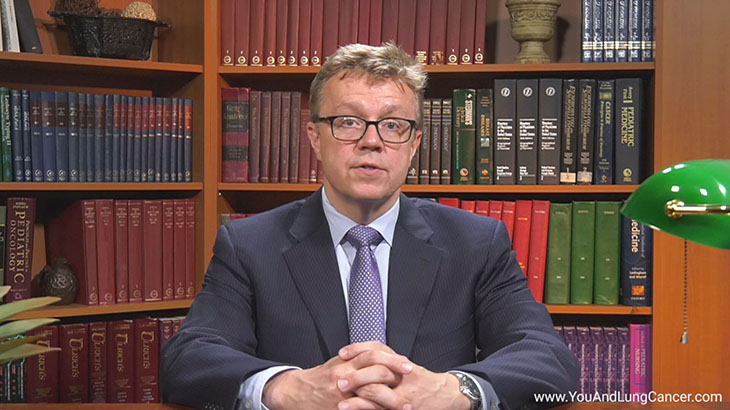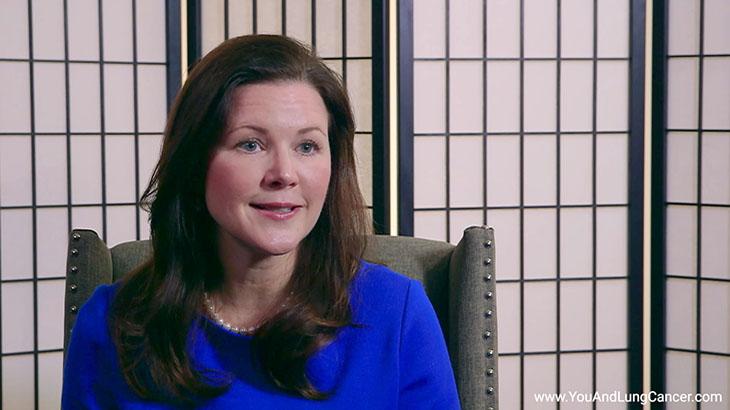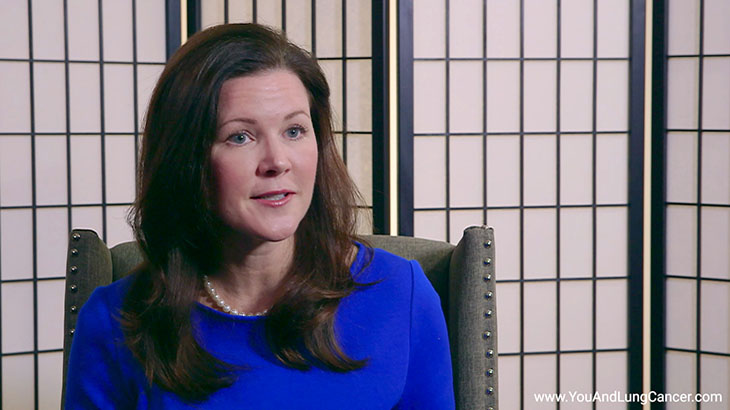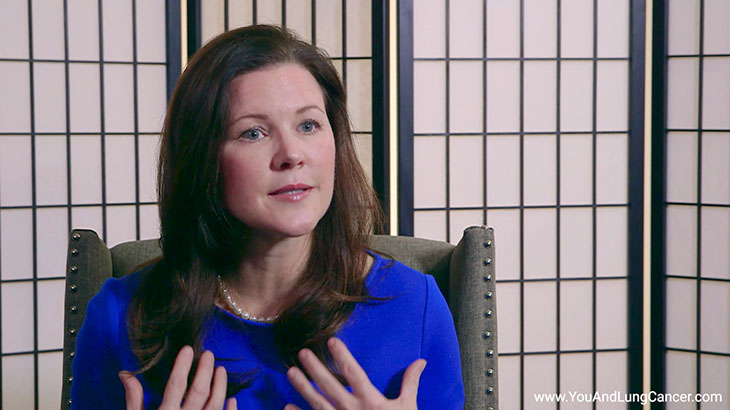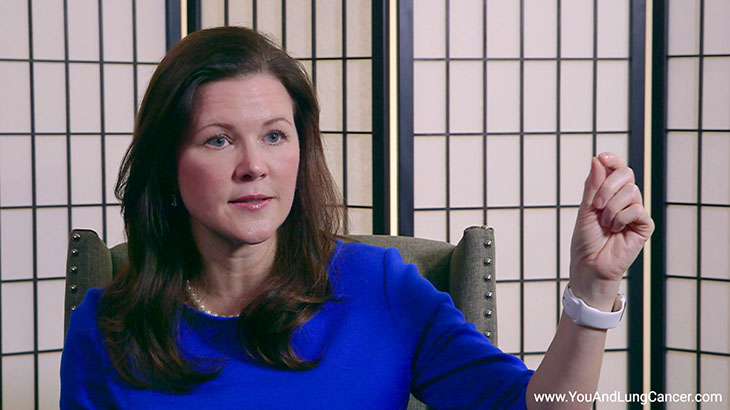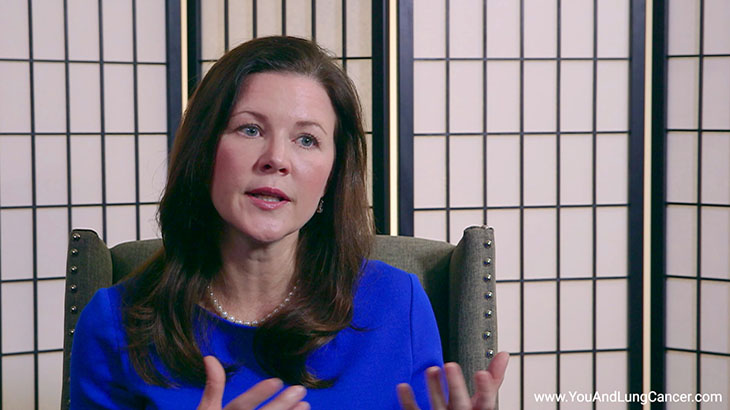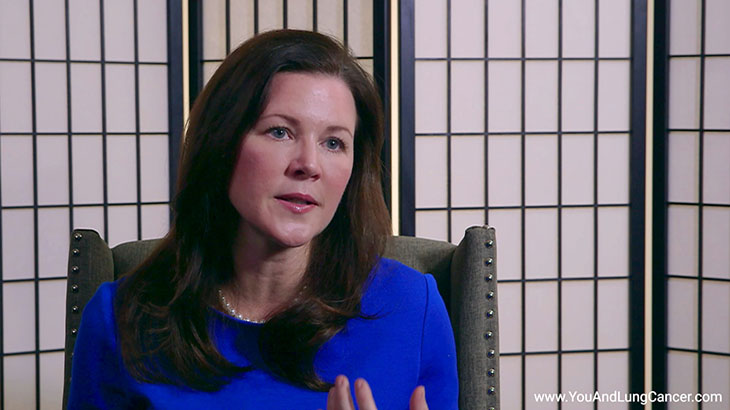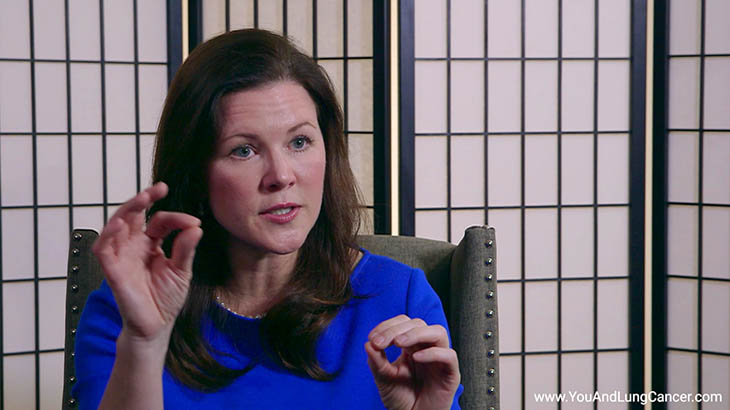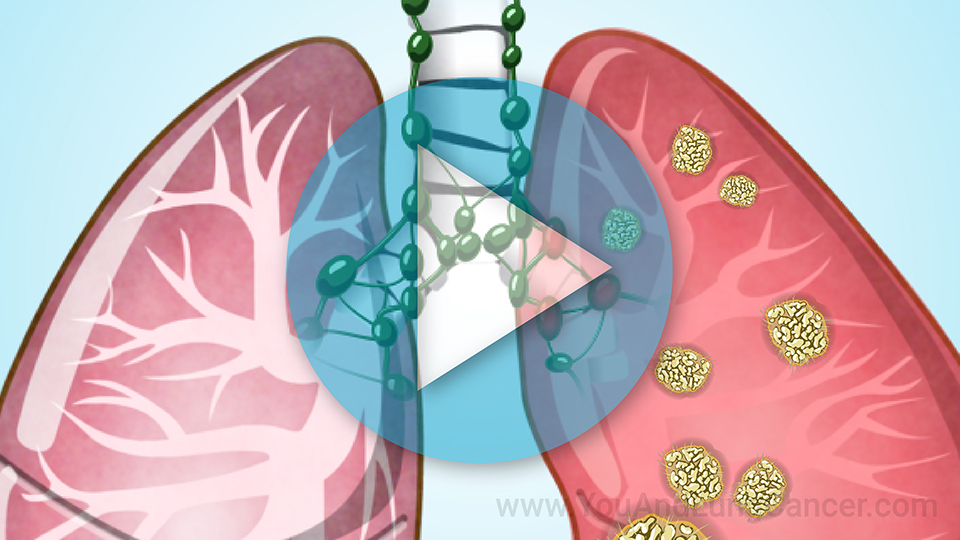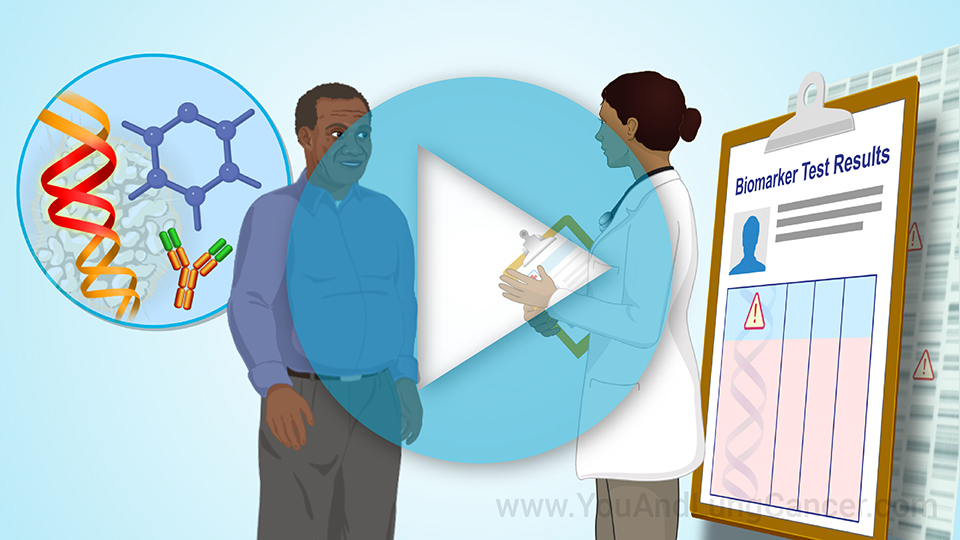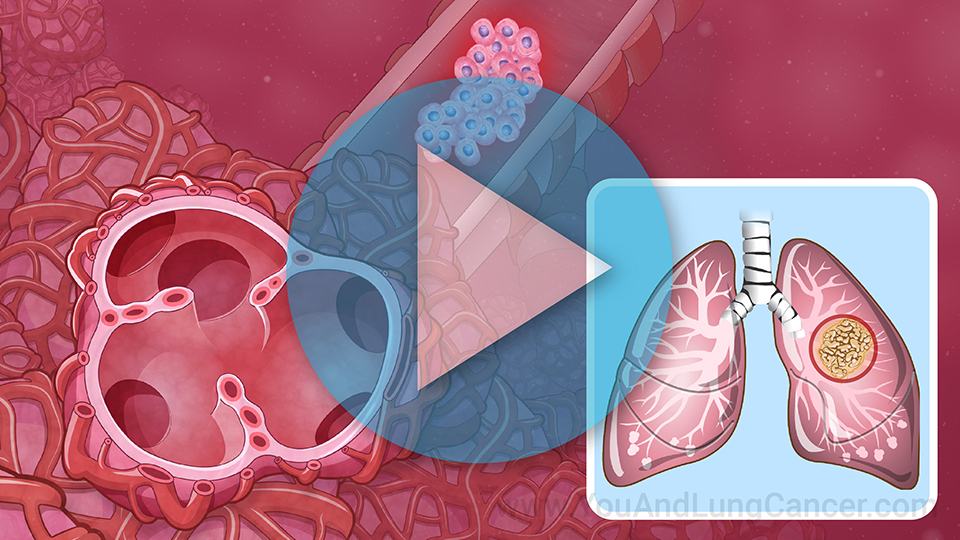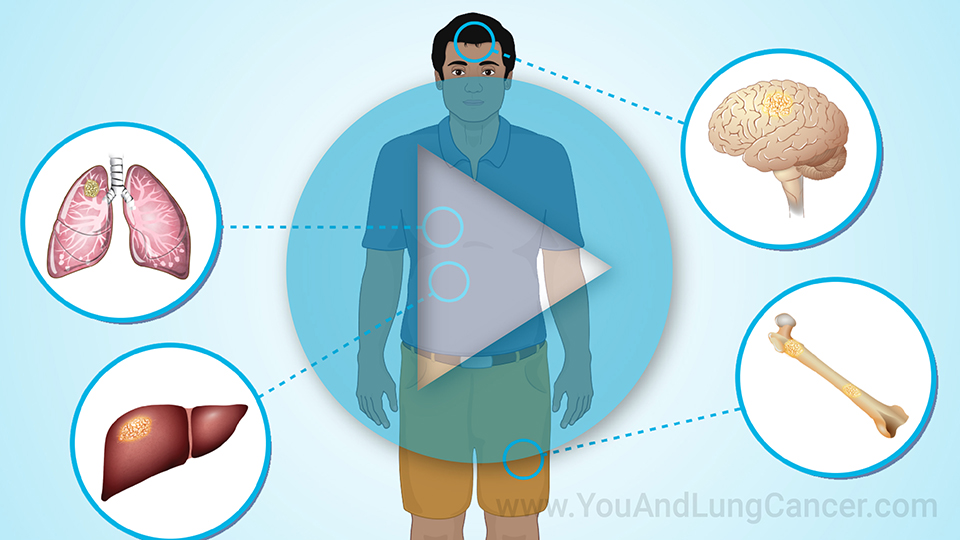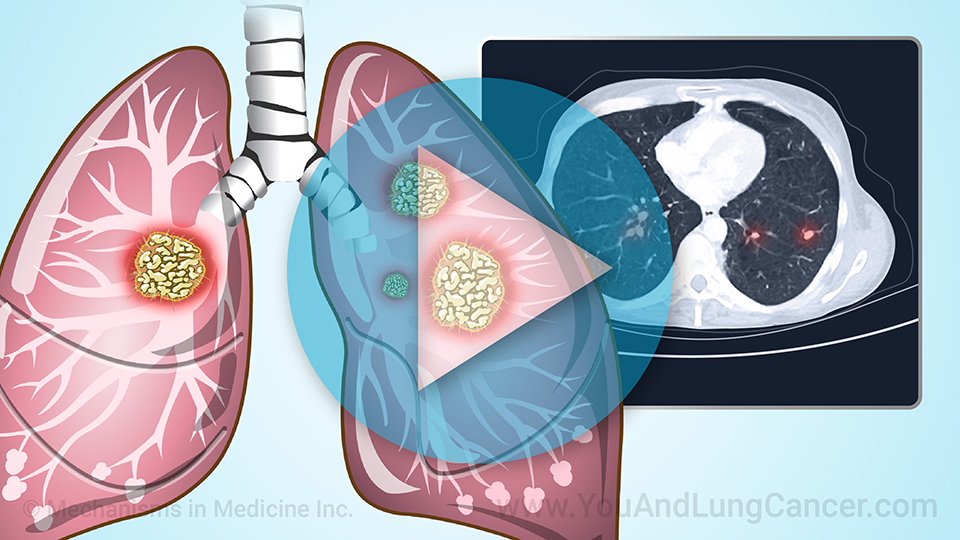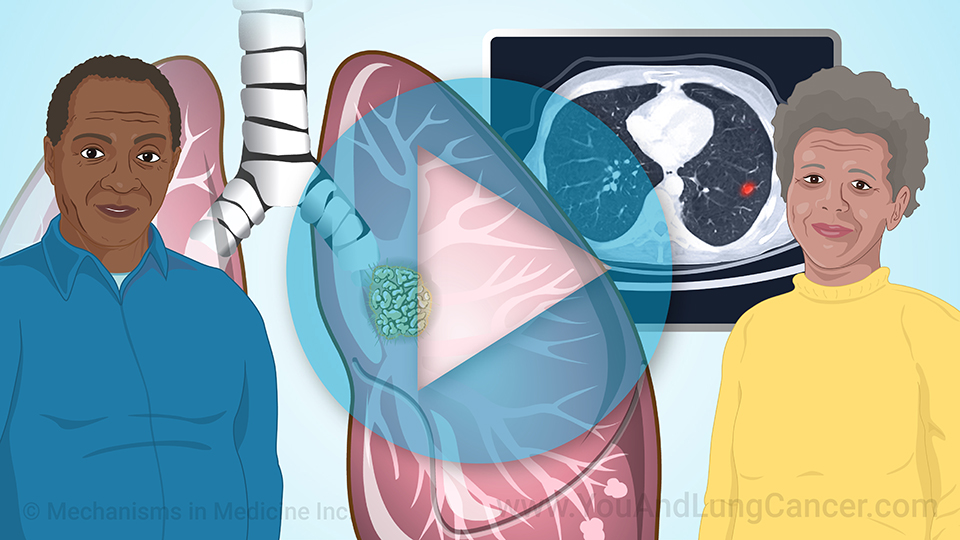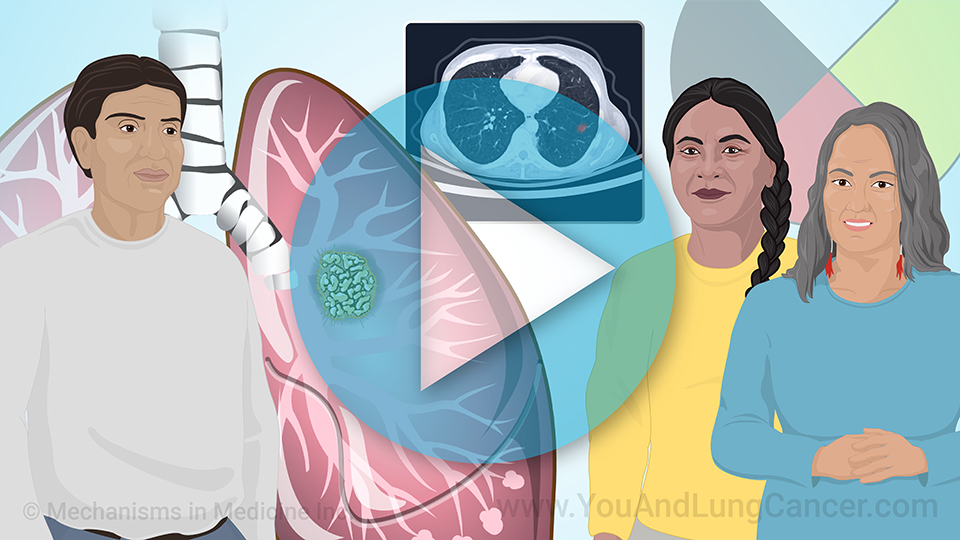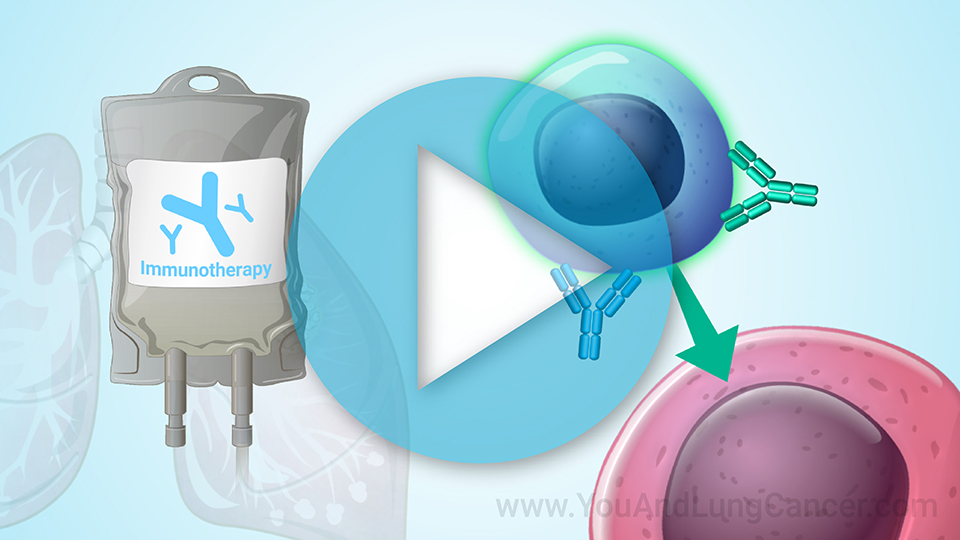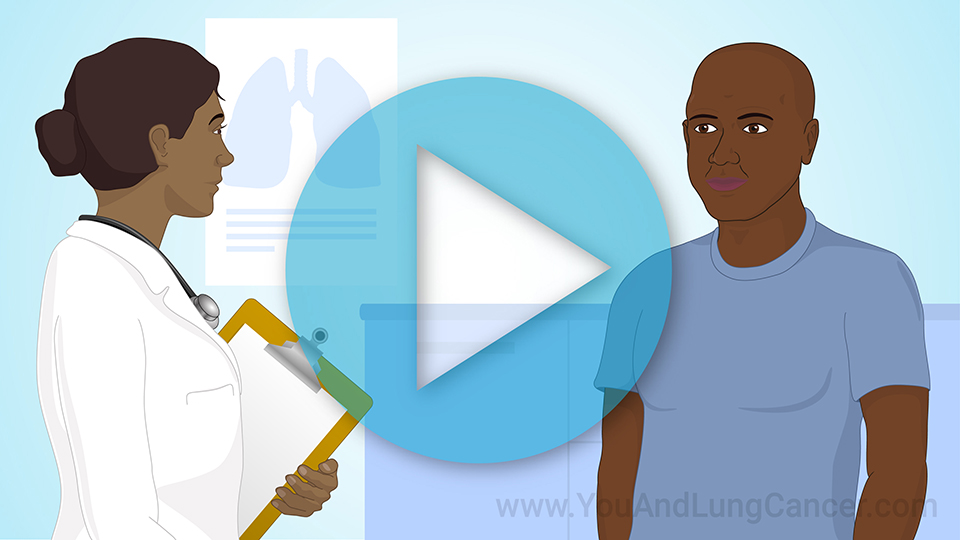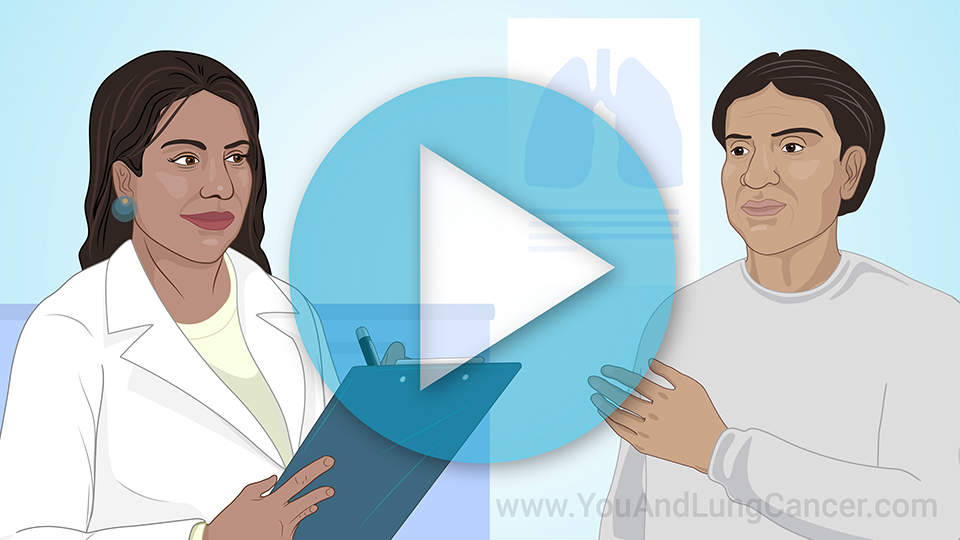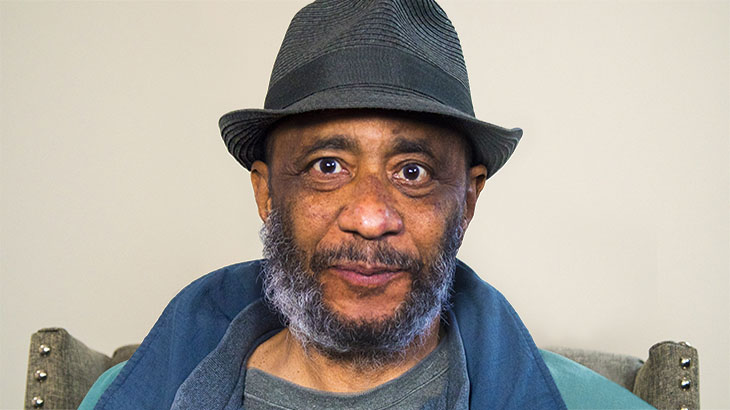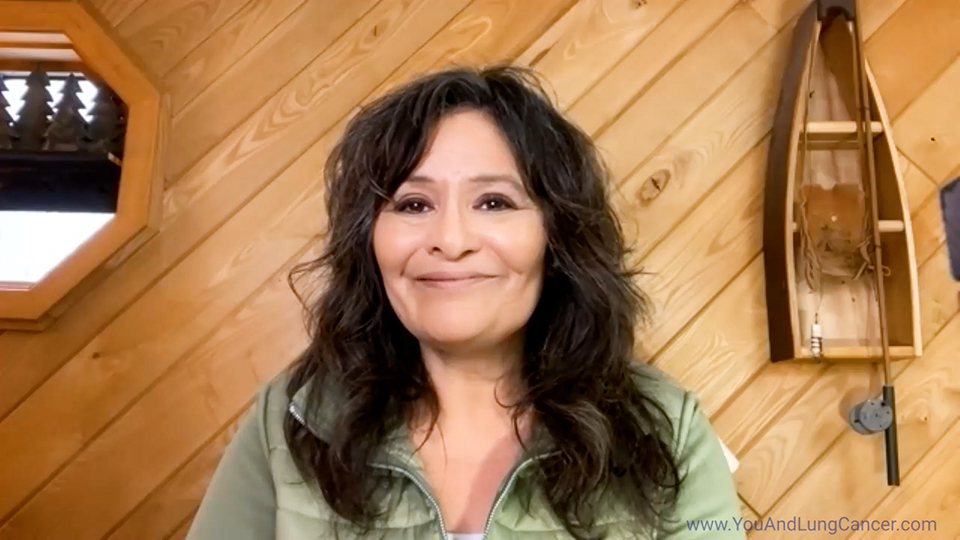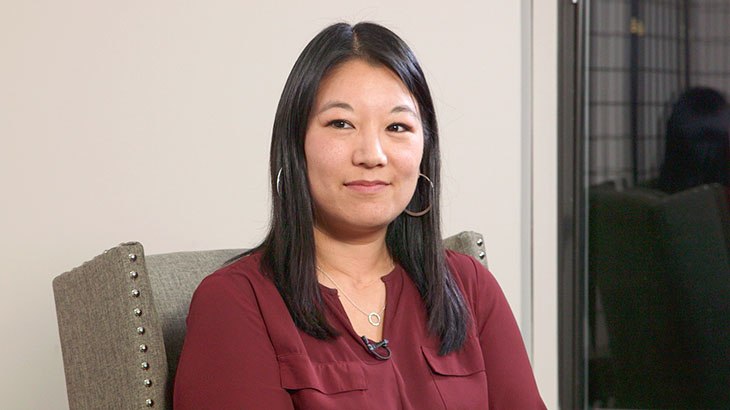Diagnosis and Screening of Lung Cancer
*Please note: This slide show represents a visual interpretation and is not intended to provide, nor substitute as, medical and/or clinical advice.
When is lung cancer diagnosed?
Most patients with lung cancer are diagnosed after they see their doctor about ongoing symptoms. By this time, the disease is often at an advanced stage.
Some patients are diagnosed early (before they feel symptoms) because their doctors notice something in a chest x-ray or another test that was done for other reasons, such as a checkup for heart disease, pneumonia, or another lung disease.
Diagnosing lung cancer
Doctors use several methods and tests for diagnosing lung cancer, including:
- Patient history (including family, work, medical, and smoking history);
- Physical exams;
- Chest x-rays; and
- CT (or computed tomography), PET (or positron emission tomography), and MRI (or magnetic resonance imaging) scans
Diagnosing lung cancer
Other methods you can discuss with your doctor are:
- Transthoracic needle biopsy (which is the most important test); and
- Bronchoscopy
Who should be screened for lung cancer?
Various expert groups recommend low-dose CT chest screening for lung cancer for people who are:
- 55 to 74 years old
- In fairly good health (with no symptoms and fit enough for surgery or other treatments)
- Are still smoking or have quit smoking in the last 15 years; and
- Have at least a 30 pack-year smoking history.
In studies of people with these characteristics, early detection with low-dose, chest CT lowered their risk of dying from lung cancer.
What is a “pack-year”?
A "pack-year" is the number of cigarette packs smoked each day multiplied by the number of years a person has smoked.
For example, you have a "30 pack-year" smoking history, if you have smoked half a pack per day for 60 years; 1 pack per day for 30 years; or 2 packs per day for 15 years.
To calculate the “pack-year” doctors ask:
- How many packs per day do you smoke? and
- For how many years have you smoked?
Lung cancer screening risks
While the benefits of finding lung cancer early can be life-saving, screening does carry some risk.
In some cases, low-dose CT screening may miss finding some lung cancers, while in other cases suspicious results may be found.
However, such abnormal results may lead to more invasive tests that can potentially cause complications - like a collapsed lung.
Tests for detecting lung cancer: Noninvasive Tests
Tests for detecting possible lung cancer include both noninvasive tests - those that don’t break the skin or otherwise enter the body - and invasive tests - those that break the skin or physically enter the body.
Noninvasive tests include:
- Chest x-rays; and
- CT and PET scans.
Tests for lung cancer: Invasive Tests
Invasive tests include:
- Bronchoscopy;
- Endobronchial ultrasound;
- Thoracentesis;
- Biomarker testing; and
-
Biopsies, such as:
- Fine needle aspiration (or FNA);
- Core needle biopsy; and
- Surgical lung biopsy.
What is a bronchoscopy?
A bronchoscopy lets doctors see inside the airways in your lungs.
A trained doctor, such as a pulmonologist or thoracic surgeon, passes a thin flexible tube - known as a bronchoscope - from the mouth or nose through the windpipe into the breathing passages of the lungs. The bronchoscope has a tiny video camera and light on its tip.
What is a lung biopsy?
With bronchoscopy, your doctor can remove a small sample of your lung tissue where cancer is suspected. This is known as a lung biopsy.
To check for cancer, a pathologist studies this biopsy sample under a microscope. If there is cancer, tiny amounts of the sample are tested further for specific features that will identify the exact type of cancer present.
This slide show explains how most patients with lung cancer are diagnosed. Some patients are diagnosed early (before they feel symptoms) because their doctors notice something in a chest x-ray or another test that was done for other reasons. Doctors use several methods and tests for diagnosing lung cancer and this slide show will help you to discuss these options with your doctor. This slide show also reviews people who are at higher risk for lung cancer and whether they should be screened for lung cancer. Screening is very important to increase the chances of detecting lung cancer early. The earlier the diagnosis the better the outcomes.
-
Share with family and friends:
Click here to take our SURVEY
Your feedback is important to us! We will use your feedback to develop future areas of content about lung cancer which will help other patients, caregivers and families.
